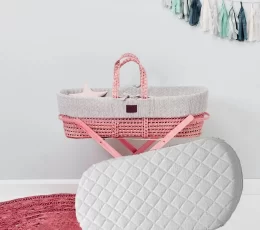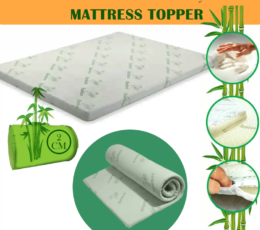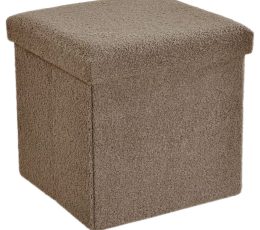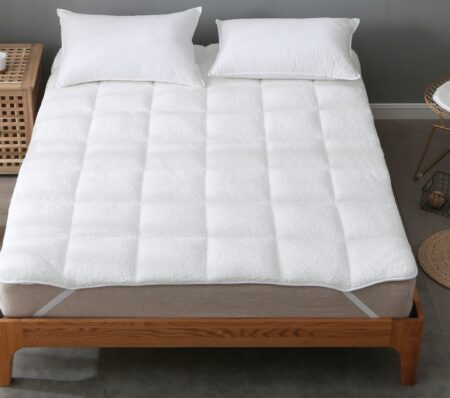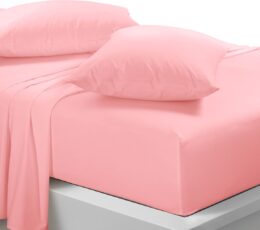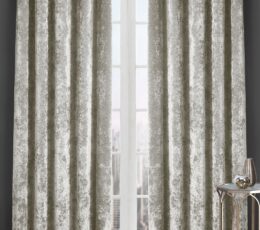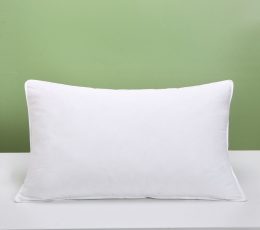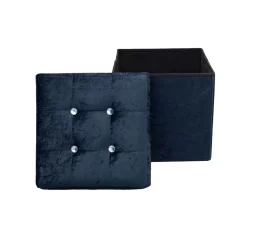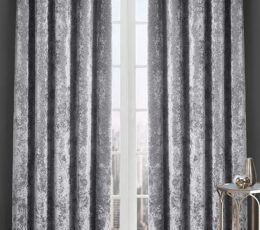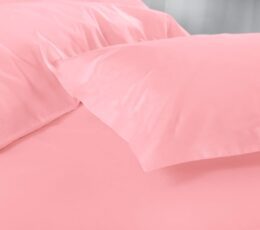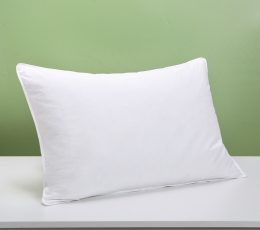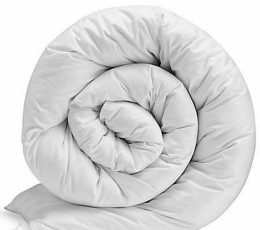Sleep is one of the most important factors in our daily lives, as it brings the energy we need to outshine our best for the next day. As for sleep, the bedding that we use makes a big difference in our sleep, and the hotel quality pillows is the most important sleeping buddy as it gives the neck and head the required rest. From this, we can understand how important a pillow guide is, but using it daily, the pillow is going to be dirty and unhygienic, so make sure you know how often should you replace your pillows to make your sleep hygienic in the long run.

How Long Should Your Pillow Last?
The lifespan of a pillow can vary depending on factors such as its quality, materials, and how well it’s cared for. Most of the pillows should be replaced every 1 to 2 years. However, the higher quality pillows like memory foam pillow or latex may last up to 3 to 5 years. In comparison, cheaper polyester-filled pillows may need replacing more frequently, every 6 months to a year. Many us even wonder what pillows do 5 star hotels use that makes them so much comfortable.
Over time, pillows tend to lose shape and support, becoming less effective at providing comfort and proper alignment for your head and neck during sleep. This deterioration can lead to discomfort, poor sleep quality, and neck pain or stiffness. Additionally, pillows accumulate allergens, sweat, oils, and bacteria over time, impacting your health and exacerbating allergies or respiratory issues. Regularly replacing your pillow helps maintain a clean and hygienic sleep environment, ensuring better sleep quality and overall well-being.
Why Should You Replace Your Pillow?
We all know the importance of using the pillow, we must know about the things to watch, which lets us know that it’s time to say goodbye to your pillow. Here are several reasons why it’s important to replace your pillow regularly:
- Loss of Support: Over time, pillows lose their ability to support your head and neck adequately. The pillow becomes flat and lumpy as the filling compresses and breaks down, resulting in discomfort and poor sleep quality. The best thickness of pillow lost as the use of the pillows increases.
- Allergen Build-Up: Pillows accumulate dust mites, mold, mildew, and other allergens over time, especially if not cleaned regularly. These allergens can exacerbate allergies and respiratory issues, leading to symptoms such as sneezing, coughing, congestion, and even asthma attacks.
- Hygiene Concerns: Pillows absorb sweat, oils, and dead skin cells from your body, creating a breeding ground for bacteria. This can result in unpleasant odors, skin problems, and acne. Regular washing may help reduce bacteria and odors, but it’s not always enough to eliminate them. The Hospital Pillow is one of the best example of the hygienic pillows to sleep.
- Wear and Tear: Like any other household item, pillows can experience wear and tear over time. Frayed edges, rips, stains, and visible signs of deterioration indicate that the pillow is no longer hygienic or functional and should be replaced.

Signs Your Pillow Needs Replacing
Excessive use of the pillow makes the pillow lose its support and the quality of the sleep we get at the time of the new pillow. So, Here are some common signs that indicate it’s time to replace your pillow:
- Flat or Lumpy: If your pillow feels flat, lumpy, or fails to regain its shape after being compressed, it has likely lost its supportiveness and needs replacing.
- Visible Wear and Tear: Check for signs of wear and tear, such as frayed edges, rips, or stains that cannot be removed through washing. These indicate that the pillow is no longer in good condition.
- Increased Allergy Symptoms: If you notice an increase in allergy symptoms such as sneezing, coughing, congestion, or itching when you wake up, it could be due to allergens trapped in your pillow. So it better to use natural filled pillows like duck feather pillows.
- Persistent Odors: Even after washing, if your pillow retains a musty or unpleasant odor, it’s a sign that it’s harboring bacteria and needs replacing.
- Neck Pain or Discomfort: Waking up with neck pain, stiffness, or discomfort can indicate that your pillow no longer provides proper support or alignment for your head and neck. For this we suggest to go with the v shaped pillow that provides the best support to your neck area.
Recognizing these signs and replacing your pillow regularly ensures a clean, comfortable, and healthy sleep environment, promoting better sleep quality and overall well-being.
How frequently should you replace your pillows?
The frequency at which you should replace your pillows depends on various factors, including the pillow’s quality, material, and usage. On average, replacing your pillows every 1 to 2 years is recommended. However, individual circumstances may warrant more frequent replacements. Here are some factors to consider:
- Quality: High-quality pillows from durable materials like memory foam or latex last longer than cheaper alternatives like polyester-filled pillows. Investing in a good-quality pillow can extend its lifespan and reduce the need for frequent replacements. As you don’t know exactly how long does cheap pillows last?
- Usage: Pillows used daily will naturally wear out faster than those used occasionally, such as decorative or guest room pillows. If you use your pillow every night, it may need to be replaced closer to the 1-year mark.
- Maintenance: Proper care and maintenance can also impact the lifespan of your pillow. Regularly fluffing your pillow, using a pillow protector or pillowcase, and following the manufacturer’s instructions for cleaning and care can help prolong its lifespan.
- Personal Preference: Additionally, personal preferences such as sleeping habits, body weight, and preferred pillow firmness can affect how quickly a pillow wears out. If you notice decreased comfort or support, it may be time to replace your pillow. So, the more you know about how often should you change your pillow the more better sleep you get.

How can you make your pillow last?
While pillows have a limited lifespan, there are steps you can take to prolong their durability and keep them in good condition:
- Use a Pillow Protector: A pillow protector or pillowcase can help protect your pillow from sweat, oils, and stains, extending its lifespan and keeping it clean.
- Regular Fluffing: Fluffing your pillow regularly can help redistribute the filling and prevent it from becoming flattened or lumpy over time.
- Air Out Your Pillow: Occasionally, airing out your pillow in direct sunlight can help eliminate moisture and odors, keeping it fresh and hygienic.
- Wash According to Instructions: Follow the manufacturer’s instructions for washing your pillow. Most pillows can be machine-washed and dried, but it’s important to use the appropriate settings and avoid overloading the machine.
- Replace When Necessary: Pay attention to signs that indicate your pillow needs replacing, such as visible wear and tear, persistent neck pain, or allergy symptoms. Don’t hesitate to replace your pillow if it no longer provides adequate support or comfort.

Ideas on How to Repurpose Your Used Pillows
When it’s time to replace your old pillows, don’t just toss them away! Plenty of creative ways exist to repurpose them and give them a new lease on life. Here are some ideas to consider:
- Pet Beds: Stuff old pillows into a durable fabric cover to create a cozy bed for your furry friends. Whether you have cats, dogs, or smaller pets like rabbits or guinea pigs, repurposed pillows can make comfortable sleeping spots for them.
- Floor Cushions: Sew or tie together multiple pillows to create large floor cushions. These can be perfect for lounging while reading or watching TV or for extra seating when entertaining guests.
- Outdoor Cushions: Use old pillows to fill outdoor cushion covers for your patio furniture. They can provide extra comfort and support while you relax outdoors.
- Car Travel Comfort: Keep a repurposed pillow in your car to provide lumbar support during long drives or to make car naps more comfortable.
- Donate: If your pillows are still in decent condition, but you no longer need them, consider donating them to homeless shelters, animal shelters, or thrift stores.
- Craft Projects: Cut up old pillows for stuffing for craft projects such as stuffed animals, dolls, or DIY home decor projects.
- Soundproofing: Use old pillows as soundproofing material by placing them in gaps or corners to absorb noise in your home or studio.
- Compost: If your pillows are made from natural materials like cotton or down, you can compost them instead of sending them to the landfill.
These are just a few ideas to get you started, but the possibilities are endless when repurposing old pillows. Get creative and think outside the box to give your old pillows new life!
How to Choose a New Pillow
Choosing the right pillow is essential for a good night’s sleep, and your preferred sleep position is significant in determining the best pillow for you is either a thick pillow or thin pillow. Here’s how to choose a new pillow based on your sleep position:
Pillows for Back Sleepers
- Choose a firm or extra-firm pillow to support your neck and head adequately.
- Look for pillows with a higher loft (thickness) to keep your spine aligned while sleeping on your side.
- Consider contoured or ergonomic pillows for side sleepers to provide optimal support and comfort.
Pillows for Back Sleepers:
- Choose a medium-firm pillow that will support the natural curve of your neck while keeping your head and spine aligned.
- Look for pillows with a medium loft that provides enough support without raising your head too high.
Pillow for Front Sleeper:
- Select a soft or low-loft pillow to prevent your head and neck from being strained by excessive elevation.
- Consider using a thin or no pillow to maintain a neutral spine position while sleeping on your stomach.
Combination Sleepers:
- If you switch between different sleep positions throughout the night, choose a medium loft and medium firmness pillow that can accommodate various sleeping positions.
- Look for adjustable pillows that allow adding or removing filling to customize the loft and firmness according to your preference. How much pillows should you sleep with also makes the great impact on your sleeping posture and rest level.
When shopping for a new pillow, you must try different options and choose one that feels comfortable and supportive for your unique sleep needs. Don’t hesitate to invest in a high-quality pillow that will give you restful and rejuvenating sleep night after night. Before getting the pillow according to your sleep position make sure you know how much to pay for decent pillows that stops you for overpaying for pillows.
How often should you wash pillows?
Washing your pillows regularly is essential for maintaining a clean and hygienic sleeping environment. While the frequency of washing may vary depending on personal preference and usage, a general guideline is to wash your pillows every 3 to 6 months. However, it’s important to check the care label on your pillow for specific instructions, as some pillows may require more frequent washing or special care. A pillow protector or pillowcase can help extend the time between washings by protecting your pillow from sweat, oils, and stains.
FAQs
How often should I replace my pillows?
The general recommendation is to replace your pillows every 1 to 2 years. However, factors such as pillow quality, usage frequency, and personal preferences can influence the replacement timeline.
What factors affect how often pillows should be replaced?
Several factors impact the lifespan of pillows, including the quality of materials, frequency of use, maintenance habits, and individual sleep preferences. Higher-quality pillows made from durable materials tend to last longer than lower-quality options.
How do I know when it’s time to replace my pillow?
Signs that indicate it’s time to replace your pillow include visible wear and tear, such as lumps or flattened areas, persistent neck pain or discomfort, allergy symptoms, foul odor, and restless sleep despite proper sleep hygiene.
Can I extend the lifespan of my pillows?
Yes, you can prolong the lifespan of your pillows by practicing good pillow hygiene, such as using pillow protectors, regular fluffing, and following the manufacturer’s care instructions for washing and maintenance.
How do different sleep positions affect pillow longevity?
Your sleep position can impact how quickly your pillow wears out. Side sleepers may need to replace their pillows more frequently due to increased pressure on the pillow, while back and stomach sleepers may experience less wear and tear.
Are there specific pillows for different sleep positions?
Yes, pillows are designed for side, back, and stomach sleepers to provide optimal support and comfort. Choosing the right pillow for your sleep position can help extend its lifespan and improve sleep quality.
What should I consider when selecting a new pillow?
When choosing a new pillow, consider factors such as your sleep position, desired firmness level, pillow material, and any specific health concerns or preferences you may have. Testing different pillows and reading reviews can help you find the best option.
Can I wash my pillows to extend their lifespan?
Yes, washing your pillows regularly can help remove sweat, oils, and allergens, prolonging their lifespan and maintaining hygiene. However, follow the manufacturer’s care instructions and consider using pillow protectors to prevent excessive wear and tear.
Is it necessary to replace decorative pillows as frequently as bed pillows?
Decorative pillows used primarily for aesthetic purposes may not need to be replaced as frequently as bed pillows. However, if decorative pillows are regularly used for lounging or support, they may require replacement sooner.
What should I do with old pillows when replacing them?
Instead of throwing old pillows away, consider repurposing them for pet beds, floor cushions, or outdoor seating. Alternatively, donate them to shelters or thrift stores, recycle them if possible, or compost natural fill pillows.
In conclusion, replacing your pillows regularly is essential for maintaining a hygienic sleeping environment, ensuring optimal support and comfort, and alleviating allergy symptoms. By paying attention to the signs indicating when your pillow needs replacing, you can enjoy a restful night’s sleep and wake up refreshed each morning. Remember to invest in high-quality best pillows and our instruction on how often should you replace your pillows to give you the sweet sleep.


